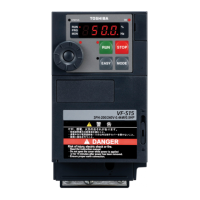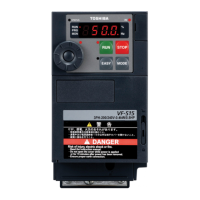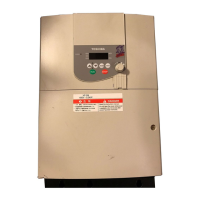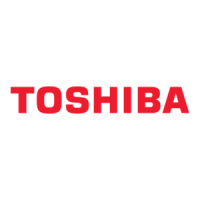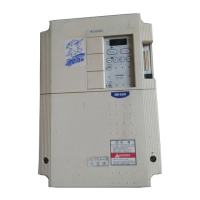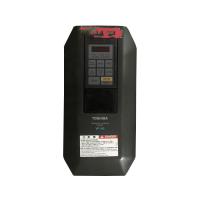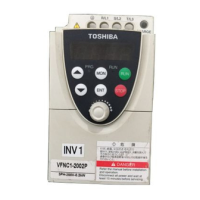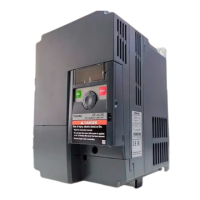E6581158
2
I
Q General Operation
Danger
See item
Disassembly
prohibited
• Never disassemble, modify or repair.
This can result in electric shock, fire and injury. For repairs, call your sales agency.
2.
Prohibited
• Never remove the front cover when power is on or open door if enclosed in a cabinet.
The unit contains many high voltage parts and contact with them will result in electric shock.
• Don't stick your fingers into openings such as cable wiring hole and cooling fan covers.
This can result in electric shock or other injury.
• Don't place or insert any kind of object into the inverter (electrical wire cuttings, rods, wires).
This can result in electric shock or fire.
• Do not allow water or any other fluid to come in contact with the inverter.
This can result in electric shock or fire.
2.1
2.
2.
2.
Mandatory
• Turn power on only after attaching the front cover or closing door if enclosed in a cabinet.
If power is turned on without the front cover attached or closing door if enclosed in a cabi-
net. This can result in electric shock or other injury.
• If the inverter begins to emit smoke or an unusual odor, or unusual sounds, immediately
turn power off.
If the equipment is continued in operation in such a state, the result may be fire. Call your
local sales agency for repairs.
• Always turn power off if the inverter is not used for long periods of time since there is a
possibility of malfunction caused by leaks, dust and other material. If power is left on with
the inverter in that state, it may result in fire.
2.1
3.
3.
Warning
See item
Prohibited
contact
• Do not touch heat radiating fins or discharge resistors.
These device are hot, and you'll get burned if you touch them.
3.
Prohibited
• Avoid operation in any location where there is direct spraying of the following solvents or
other chemicals.
The plastic parts may be damaged to a certain degree depending on their shape, and
there is a possibility of the plastic covers coming off and the plastic units being dropped.
If the chemical or solvent is anything other than those shown below, please contact us in
advance.
1.4.4
(Table 1) Examples of applicable chemicals
and solvents
Acetic acid (density of 10% or less)
Hydrochloric acid (density of 10% or less)
Sulfuric acid (density of 10% or less)
Sodium chloride
Hexane
Triethylene glycol
(Table 2) Examples of unapplicable
chemicals and solvents
Acetone
Benzene
Chloroform
Ethylene chloride
Ethyl acetate
Glycerin
Tetrachloroethylene
Trichloroethylene
Xylene
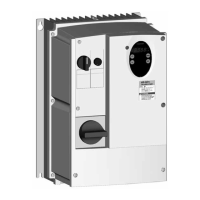
